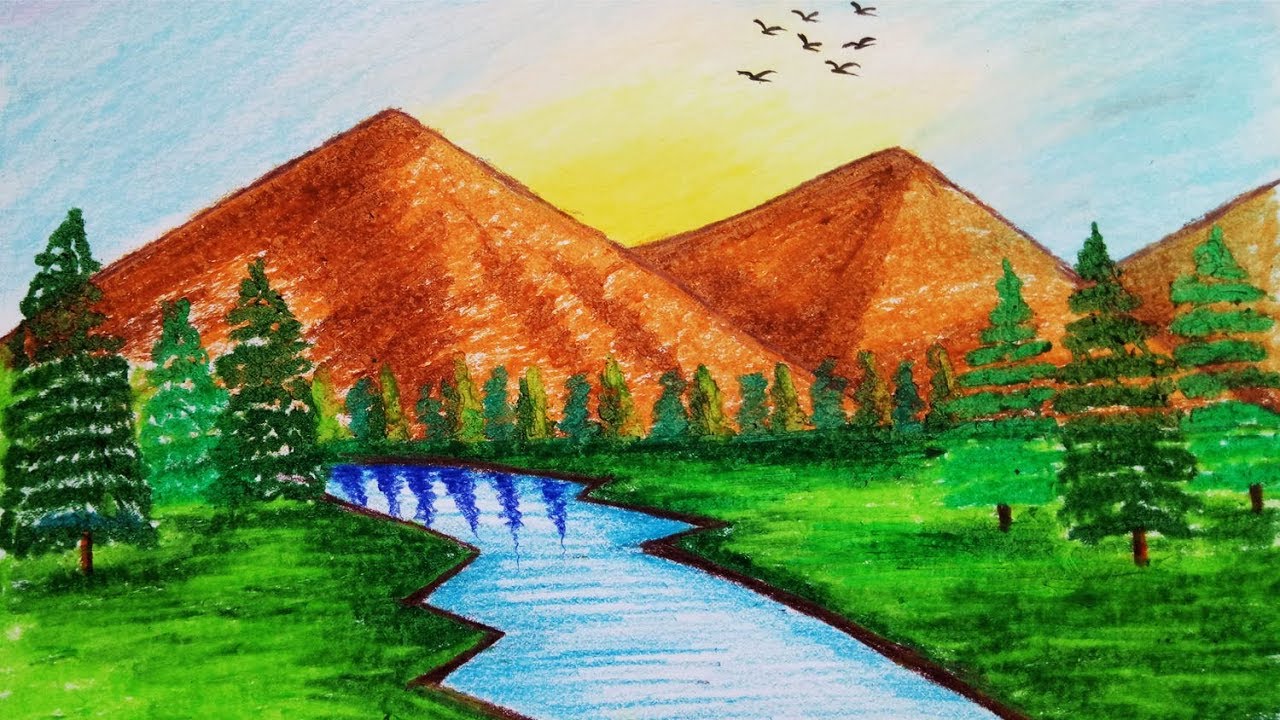

By making the water darker we will create the effect of reflection on the surface of the water. Using linework is a great way to establish stillness within the water, whereas scribbling styles are useful for suggesting bushes and foliage. From the background, we want to work lightly with a light blue pencil, slowly darkening the scene as we come to the foreground. The aim is to strategically establish the different tonal values within the forest as we add little details with different colored pencils. We want to slowly establish a sense of shadow within the elements of the forest as we go through the forest drawing. That being said, we don’t want to color in the elements too much.Īs you shade with your blue pencil, you also want to keep the shading on the same side of each element in the forest. You want to make sure that you use a slightly darker blue pencil for the midground details. Make sure that the trees start to darken as they come to the foreground.Īs you draw the forest, moving from the background to the midground, you can begin to sketch in foliage. As you slowly proceed to draw trees within the midground, we want to slightly darken them. We want to lightly draw trees in the distance, which should be small and thin. Starting with the background, take a light blue pencil and proceed to draw light lines in between the sketched trees to suggest trees in the distance. Once we have a background, midground, and foreground of the forest drawing, we can now start to work with color. Step 2: Using Color to Create Depth in the Forest How we do this effectively is by the use of color. By doing so, we will establish a more realistic quality within our forest drawing. We want to ensure that we establish depth with, a background, midground, and foreground. You can also use a light blue pencil, giving them a distant appearance. When sketching your trees in the background, you want to draw them in between the foreground and midground trees. The midground trees can be slightly smaller, and then the trees in the background should be the smallest. When we draw tree trunks in the foreground, they can be large. Try to establish the basic depth formation within the forest drawing by creating sets of different tree sizes. As you continue drawing your forest, proceed to draw thinner tree trunks as you draw trees further in the distance. Once we have the foreground established, we can draw some trees along the banks in the foreground of the forest.Īs we draw the trees in the foreground, we can allow them to extend out of the scene for scale. We want the stream to establish the foreground of the forest as it flows into the distance. We want to draw banks that slope upward so that the stream can disappear into the background.


To give the forest a unique feel, we want to establish a little stream that runs through the center of the forest. We now want to use our HB pencils to create a light sketch of a forest. We do this by taking our HB pencil and ruler and proceeding to create an evenly measured border around the page. We want to begin by drawing a border around our page with our pencils. From there, we will work with our ballpoint pens and markers to create more distinct and significant linework within the forest drawing to give the forest elements a more defined structure. From there, we will proceed with our forest drawing by using blue pencils to establish a color value for the background, midground, and foreground.
FOREST SCENERY DRAWINGS HOW TO
In this tutorial on how to draw a forest, we will begin by creating a loose sketch of a forest using pencil. Step-by-Step Instructions on How to Draw a Forest 3.2 How Do You Draw Light and Shadows Within a Forest?.3.1 How Do You Create Depth in a Forest Drawing?.1.5 Step 5: Using Pen and Marker to Add More Contrast to the Forest.1.4 Step 4: Darkening the Foreground and Midground of the Forest.1.3 Step 3: Adding Features to Our Forest Drawing.1.2 Step 2: Using Color to Create Depth in the Forest.1 Step-by-Step Instructions on How to Draw a Forest.


 0 kommentar(er)
0 kommentar(er)
